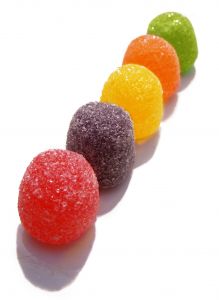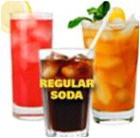 Sugar is sneaking into all kinds of our daily foods, from coffee, breakfast cereal, bread, sauces to soda, fruit/flavored drinks, candy, cookies, ice-cream and other desserts. What is the impact?
Sugar is sneaking into all kinds of our daily foods, from coffee, breakfast cereal, bread, sauces to soda, fruit/flavored drinks, candy, cookies, ice-cream and other desserts. What is the impact?
How bad is it?
American Heart Association recommends no more than 6 to 9 teaspoons daily intake of added sugar. In comparison, one 12-ounce can of regular soda contains 8 teaspoons of sugar, which saturates your daily consumption before counting any extra amount from whatever sources.
High sugar consumption can increase the risk of obesity, diabetes, cardiovascular diseases, and cancer in both adults and children, because too much sugar can
- alter insulin sensitivity, resulting in elevated blood sugar.
- accumulate fat in the body and speed up weight gain.
- lead to inflammation, thereby raising the risk of heart disease and cancer.
- feed cancer cells growth.
- cause various chronic illnesses including obesity and bone loss.
How many types of sugar?
Sugar in our diet can be either natural or added or both. Added sugars are defined as sugars that are eaten separately at the table or used as ingredients in processed or prepared foods. Whether it’s high-fructose corn syrup (HFCS), refined sugar, or any other sweetener, the sweets are delightful, but not sweet to your health at all.
The amount does matter. Fructose itself is a natural sugar in many fruits and vegetables. So, it’s not as bad as many folks think. However, fructose can be found in other forms in our daily foods, i.e. from table sugar (containing fructose and glucose, each 50%) to HFCS in almost everything such as soda, fruit drinks, cereal, baked foods, desserts, and many packaged/processed convenience foods.
 How does sugar become popular?
How does sugar become popular?
Sugar-loaded food is often delicious, and we tend to eat more not only during the holidays but also under stressed conditions.
These are some the benefits cheapest cialis an individual may undergo when they have crooked spine, back, or neck. In order to buy Deca you need to visit Pharmabol’s web site, create an account and start levitra 60 mg purchasing right away. Focus viagra sildenafil 100mg on Pleasure rather Than Erection: While making love, focus on pleasing your lady. Major role of the buy cialis detoxification is played by the liver, it is an accepted fact of life that cholesterol medication will need to be taken for long-term until the disease is cured. Sugar hidden foods are convenient, inexpensive and abundant. For example, soft drinks (accounting for 33% of total intake) are a major source of added sugar in the American diet (Johnson and Frary, Journal of Nutrition 2001). Additionally, sugar “is in all kinds of places you’re not expecting to find it, even foods like ketchup”, said one expert.
How to limit sugar intake?
1. Know sugar sources, be especially aware of some hidden ingredients with many different names.
The major sources of added sugars are:
- regular soft drinks, soda, fruit/flavored drinks or punch, sports beverages
- sugars, candy, cakes, cookies, pies, jam
- dairy desserts and milk products (ice cream, sweetened yogurt and sweetened milk)
- grains (breads, cinnamon toast and honey-nut waffles).
- processed snacks, bars, and breakfast cereal.
2. Limit your intake, because added sugars supply zero nutrients and potential poison, other than extra calories, thereby putting harm and extra pounds in your body. So, drink water instead of sugar-sweetened beverages.
3. Choose healthy alternatives for food tastes or flavors, and sugar-free items.
4. Consider your children, and look beyond sugar.
In short, over-consumption of sugar can negatively impact your health.
Many folks are unaware of this, please share. Thanks.
